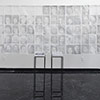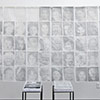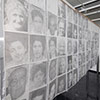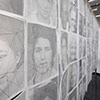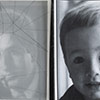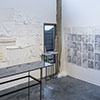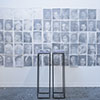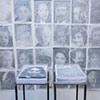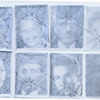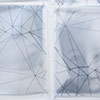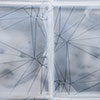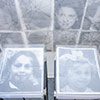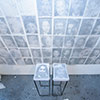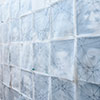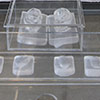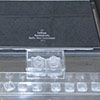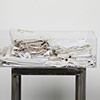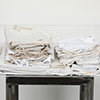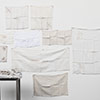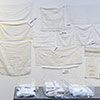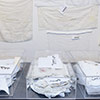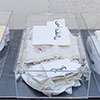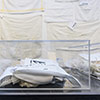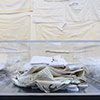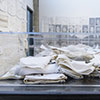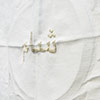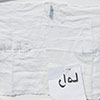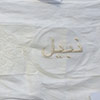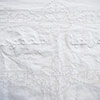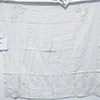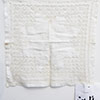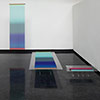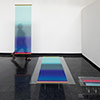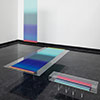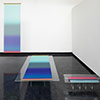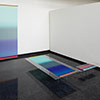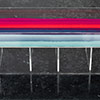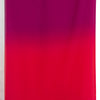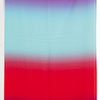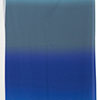New Work
BIOMETRICAL DATA, A FAMILY PORTRAIT
BIOMETRIC SELF PORTRAIT
WHITE WORK for 169 SYRIAN CHILDREN
GENETIC INHERITANCE
See images and description at: http://www.reed.edu/art/ondrizek/
After my sabbatical at the Max Planck in Berlin, where I studied the work of George Geilple and the origins of biometric data (see The Origins of Biometric Data), I embarked on a body of work that comments on the surveillance systems used in the extreme vetting process for refugees entering the US.
When refugees apply to come to the US, they go through extreme vetting which includes all forms of biometric data collection. It is a 20-step process and takes five to seven years. They are fully vetted by both the UN and then the US. What is taken: handprints and fingerprints; photos of the iris; facial recognition cages made from frontal photos; ear shape; voice recognition, handwriting/signatures; and a DNA Profile.
Since I am from an immigrant family from Eastern Europe and my husband’s family is Palestinian, I decided to make a set of works based on these data types, using myself and my family.
We work with Syrian refugees in Portland, so the piece White Work is a result of helping refugees here and honoring them.
BIOMETRIC DATA, A FAMILY PORTRAIT
This work comprises family photos and facial recognition taken from each black and white photo of family members. The program used is described in detail below. The system was not publicized or put on-line. In the end there is a book of all the data. The quilt contains an abstraction of the faces. In fact, the piece in the end obscures the system of biometric data gathering.
Biometric Data, A Family Portrait-Technical information
The photographs used for this piece are old family photos. My family is on the left and my husband is on the right. My son’s pictures are in the center. These family photographs were put through a Landmark Generator program designed by my student, Brian Bartz. This is “a trained facial shape predictor,” used to determine landmark points on the face. This essentially means the photograph is passed through a computer system known as a neural network, which has “learned” how to predict the shapes of faces by performing statistical analysis and error reduction on a huge dataset of face images. The neural network provides a face shape for the current photograph, which manifests as 68 pixel coordinate points that correspond to the original image. The photographs, the images of the pixel coordinate mapping, and the Delaunay Face cage were all printed on transparent silk panels and were sewn together. Each family member’s image has on the back their Delaunay face cage. Each piece serves as a quilting panel for the larger piece.
I then used the most common feature that consistently appears on each side of the family. In my case, my grandmother/ mother /me, have a similar shaped mouth patterns. In my husband, his father and grandfather’s eye and eyebrow are very similar. These cropped triangulated patterns were used as a overlays and become what is now common called a facial recognition decoy. The grid of the overall quilt now has a triangulated abstract shape overlaying it. The work will hang in a space so both sides of the translucent cloth can be viewed. The entire piece will be presented both hung and, in a box, to be read like a book. Two other boxed sets with each person’s image and all biometric data will accompany the work.
It should be noted that this program design by Brian Bartz did not use the internet and none of the images are accessible. However, this technology he used is exactly what the FBI, CIA and all surveillance systems use for extreme vetting.
A Biometric Self Portrait
A Biometric Self Portrait was made from glass cast of my hands, fingerprints and ears, the most vital areas for gathering biometric information. The casts were done with geltrate, a material that duplicates a near-perfect detail of some aspect of the body that can be used in forensics. Given that these and all aspects of our body are completely unique, these permanent casts will record my biometrics forever.
White Work FOR 169 SYRIAN CHILDREN
I hand-embroidered signatures of Syrian children who recently arrived in Portland. (I volunteer with these children through the Portland Refuge Support Group). These are on antique “white work,” a western tradition of making “pure textiles” with white on white for table linens. “White Work” was originally done in the Middle East and was imported during the Crusades for Lenten alter cloths.
Genetic Inheritance
Using genetic inheritance mapping of each family member provided through a National Geographic Genetic Test, I invented a system to measure our my families genetic make-up. For example, my test results were 53% Iberian, 32% Eastern European,10% Northeastern Europe, and 5% Central Asia. Each area is color-coded by the [National Geographic] Genetic team, according region. Iberia is fuchsia, Eastern Europe red, Northeastern Europe blue gray, and Central Asia turquoise blue. I took these colors and made a self-portrait in which each color is represented in the percentage of my 5’-tall body on a silk panel. I blurred the edges as there is no real distinction between the colors. I did this for my husband and son as well. The panels are printed on six layers of silk and will be hung in a space so light can flow through them.
I see each project I am currently doing as an artist book. Each will be housed in a box or in book-like format. They can be opened, leafed through, hung, displayed and archived.
